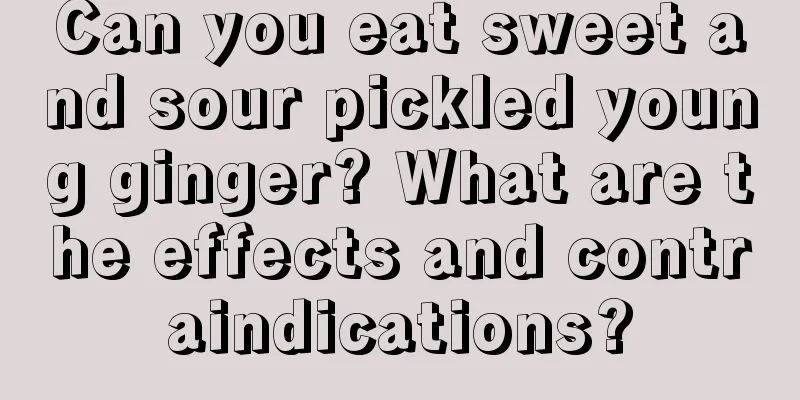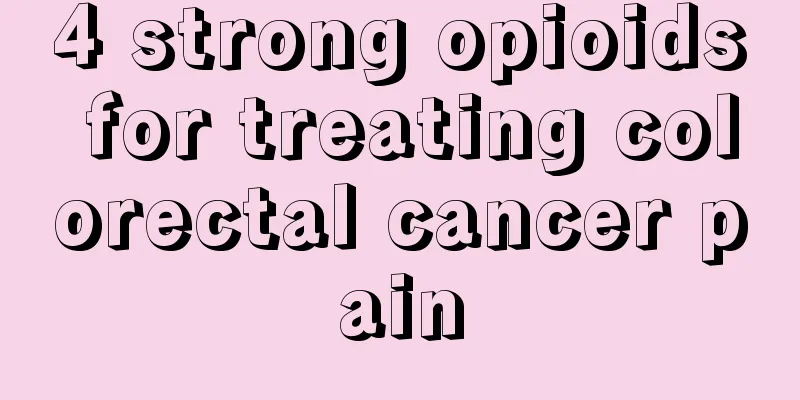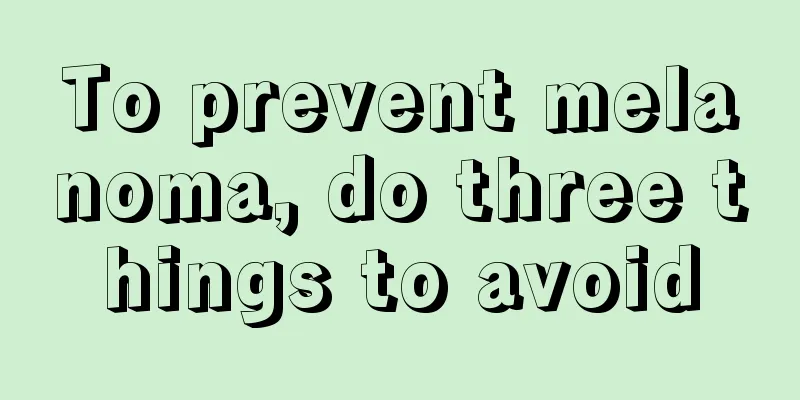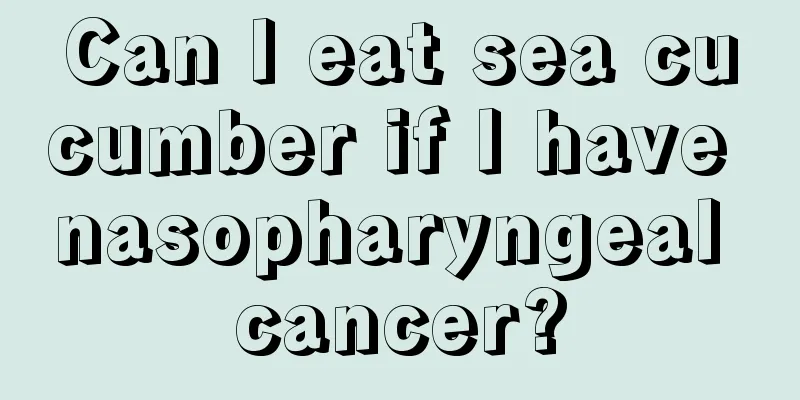Mental disorders caused by craniocerebral trauma, these manifestations need to be watched out for
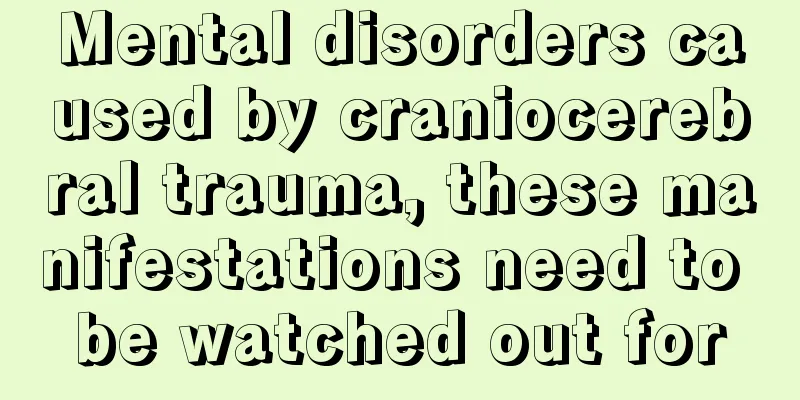
|
Mental disorders caused by craniocerebral trauma are syndromes that appear some time after the craniocerebral trauma. Patients will still have symptoms of dizziness and headaches, and are easily agitated and angry. Their vision and hearing will also decrease. They need timely treatment, especially psychotherapy. 1. Symptoms and Signs 1. Headache and dizziness Headache is the most common symptom, accounting for about 78%. It is mainly characterized by diffuse head swelling and throbbing headache, which is persistent and severe. The attack time is irregular, mostly in the afternoon. The location is often in the forehead and temporal area or the back of the occipital area, sometimes involving the entire head, or a feeling of pressure on the top of the head, or a feeling of tightness in a ring, causing drowsiness and restlessness all day long. Headaches located behind the head of the neck are often accompanied by tension and pain in the neck muscles, and are often related to craniocervical injuries. Headaches can be aggravated by insomnia, fatigue, bad mood, work problems or external noise. Dizziness is also common, accounting for about 50%. Patients often report feeling dizzy and lightheaded, but in fact, this is not true vertigo, but a subjective feeling of cloudiness in the head, unclear thinking, or a feeling of confusion. Sometimes they think they cannot maintain balance, which is often aggravated by turning the head or changing body position. However, neurological examination shows no clear vestibular dysfunction or ataxia. After appropriate symptomatic treatment and comfort and encouragement, the symptoms may be alleviated or disappear, but they will reappear soon. 2. Hysterical reactions: The patient's mood often fluctuates, he is easily irritable and angry, sometimes he may have muscle spasms, decreased vision, decreased hearing, close his eyes and remain silent, involuntary crying and laughing, and even hysterical paralysis. In severe cases, he may be in a state of stupor or mutism. 3. Neurological examination usually shows no definite positive signs. 2. Medication 1. Psychological and behavioral therapy: Pay attention to the patient's condition, provide careful guidance, and dispel the patient's misunderstanding that "post-concussion syndrome cannot be cured." We should show concern for the patient's illness, patiently enlighten them, relieve their worries, and build up their confidence so that they can understand and overcome the disease. Create a good medical living environment for patients and avoid various adverse external stimuli. Encouraging patients to get out of bed and move around, participate in more outdoor activities, exercise, live a regular life, correct bad habits and hobbies, resume work within their capacity as soon as possible, learn new knowledge and skills, actively participate in social interactions, establish good interpersonal relationships, and be cheerful, emotionally stable, work smoothly, and have a harmonious family, will be more conducive to complete recovery in physical, mental, and social adaptation. 2. Symptomatic treatment: Analgesics can be given for headaches, but anesthetics or morphine-like drugs should not be used to avoid addiction. Such as Rotundine (Cranial Pain Ding), Levorotatory Stephania, Naproxen, Enteric-coated Aspirin, Ibuprofen; for dizziness, diphenhydramine, chlorobutanol, etc. can be given; for autonomic dysfunction, oryzanol, promethazine, γ-aminobutyric acid (γ-aminobutyric acid), methylphenidate (methylphenidate), atropine (atropine sulfate), scopolamine, etc. can be given; for excited patients, perphenazine, diazepam (Valium), oxazepam (norhydroxydiazepam), etc. can be given; for depressed patients, glutamate and γ-aminobutyric acid can be given. In addition, traditional Chinese medicine can also be used for treatment. Commonly used Chinese patent medicines include: Anshen Buxin Pills, Gastrodia Su Tablets, Angong Niuhuang Pills, Naoning Syrup, Naozhenning, etc. Physical therapy, acupuncture and other measures can also be used. |
<<: The harm of ozone, this way of prevention will reduce the harm
>>: 7 signs of stroke that you need to know
Recommend
How to use a thermometer?
Thermometers are common tools in our lives. Many ...
Can late-stage colon cancer be cured after surgery
Colon cancer is a malignant tumor disease with a ...
Does Zuguangsan have serious side effects?
Athlete's foot is a relatively common disease...
Rectal cancer diagnosis and staging
Blood in the stool, weight loss, anemia, abdomina...
How long does it take to live in after spraying latex paint
Generally, you cannot move in immediately after s...
What are the specialties of Fujian?
Fujian is located in the southeastern coastal are...
Common causes of pancreatic cancer
Pancreatic cancer is also one of the more common ...
What are the early symptoms of liver cancer? Beware of the three early symptoms of liver cancer
The incidence of liver cancer is very high and mu...
What are the menstrual manifestations of endometrial cancer? Do you know these three manifestations?
If you have endometrial cancer, your menstrual cy...
What do chief cells secrete
Chief cells exist in every friend's body. Chi...
What are the causes of uterine cancer
The cause of uterine cancer is not very clear. Me...
Appetizing home-cooked dishes
Many housewives often struggle with what to cook....
Where does colon cancer pain usually occur? Take care of it like this after the pain
Where does the pain of colon cancer usually occur...
What is the cause of lumps on the temples?
The growth of pimples on the temples may be cause...
What are the effects of sliced teeth on teeth
When our teeth have some common problems, such as...
